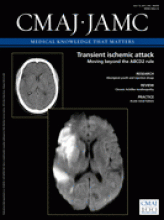Proponents call it “bringing acute care to patients” and for many senior citizens who reside in 15 nursing homes throughout Halifax, Nova Scotia, it’s eliminated lengthy waits for treatment at hospital emergency departments.
In fact, so successful has a pilot project to provide on-site treatment of patients at nursing homes by “extended care paramedics” been that the province’s health minister is considering expansion of the initiative to other parts of the province.
The goal of the Extended Care Paramedic program, which was launched in February, was to “provide treatment sooner” to patients in nursing homes by essentially placing seven specially trained paramedics in nursing homes between the hours of 9 a.m. to 9 p.m., seven days a week, explains Dr. Andrew Travers, provincial medical director for Emergency Health Services in Nova Scotia and assistant professor of emergency medicine at Dalhousie University. “That was when the biggest transfers [to emergency departments] were happening from nursing homes.”
Under the pilot program, 135 seniors in nursing homes had been seen by the extended care paramedics as of Apr. 15. Of those, 98 or 73% of patients were treated and released on site; 26 patients received a “facilitated” emergency visit (in which a care plan is developed by the paramedic and an online physician prior to the patient’s arrival at hospital), and 11 patients were admitted to hospital.
There have also been unexpected benefits, particularly with regard to the provision of palliative care. “A substantial number of cases were end-of-life cases. … [The paramedics] have been able to afford patients and their families the benefit of bringing the emergency room to them,” Travers says. “Usually there is a do not resuscitate order. But they can still offer pain relief and fluids. It gives great comfort.”
So successful has the program been that provincial Health Minister Maureen MacDonald said in a news release that the government is considering its expansion to other parts of the province. “We are looking at ways to use the skills of paramedics in other communities across the province in a way that benefits the particular needs of that area” (www.gov.ns.ca/news/details.asp?id=20110316002).

In about a two-month period, paramedics assigned to patients in Nova Scotia nursing homes treated 135 senior citizens. Of those, 98 were treated and released on site; 26 received a “facilitated” emergency visit, in which a care plan is developed by the paramedic and an online physician prior to the patient’s arrival at hospital; and just 11 needed to be admitted to hospital.
Image courtesy of © 2011 Thinkstock
The Extended Care Paramedic program was jointly developed by Emergency Health Services, the Capital Health district authority and administrators of the province’s Continuing Care program.
It proposed to train several paramedics to provide on-site treatment of the elderly in nursing, in consultation with an online physician, for such conditions as cuts received during falls. The paramedics were also trained to do routine blood work and suturing.
Seniors can either receive the treatment they need in the nursing home, or be prepared for a “facilitated” emergency department visit, for such things as diagnostic tests or more complex forms of treatment. In the latter instance, the extended care paramedics develop a care plan with an online physician and when the patient arrives at hospital, a medical team is waiting. “The diagnosis is done quickly and [the patient] is quickly transported back,” Travers says, adding that in the past, many such elderly patients were the ones “waiting for a long time in ambulance hallways.”
More serious cases are handled through normal ambulance procedures, while the extended care paramedics return to their nursing home duties, Travers says. “These paramedics are in no rush,” he notes. If necessary, “they will stay with the patient for two to three hours.”
Travers lauds the program as the first of its kind in Canada. “We have previously brought primary health care to patients. This is bringing acute care to patients. It’s new and novel.”
And at no additional cost to the system, Travers says, noting that the paramedics were already on the provincial payroll. “We’ve reallocated resources internally.”
MacDonald also gave the program a thumb’s up. It’s a “great example of government working with partners to deliver health care differently,” MacDonald said in the release. “We want seniors to have access to the best care possible from health-care teams so their experience is as quick, safe and comfortable as possible.”
Editor’s note: Thirteenth of a series on end-of-life care
Part I: Preparing for the inevitable (www.cmaj.ca/lookup/doi/10.1503/cmaj.109-3704)
Part II: Advance directives: obstacles in preparing for the worst (www.cmaj.ca/lookup/doi/10.1503/cmaj.109-3743)
Part III: End-of-life planning framework calls for fewer checklists, more conversation (www.cmaj.ca/lookup/doi/10.1503/cmaj.109-3746)
Part IV: Tools help patients tackle tough choices for end-of-life care (www.cmaj.ca/lookup/doi/10.1503/cmaj.109-3750)
Part V: National home care standards urged (www.cmaj.ca/lookup/doi/10.1503/cmaj.109-3731)
Part VI: Access to palliative care varies widely across Canada (www.cmaj.ca/lookup/doi/10.1503/cmaj.109-3763)
Part VII: Framework urges physicians to proceed with caution on palliative sedation (www.cmaj.ca/lookup/doi/10.1503/cmaj.109-3766)
Part VIII: Pocket-sized help for people with dementia (www.cmaj.ca/lookup/doi/10.1503/cmaj.109-3705)
Part IX: Grief therapy for those left behind (www.cmaj.ca/lookup/doi/10.1503/cmaj.109-3793)
Part X: Providing hospice in the womb (www.cmaj.ca/lookup/doi/10.1503/cmaj.109-3776)
Part XI: Providing palliative care to the homeless (www.cmaj.ca/lookup/doi/10.1503/cmaj.109-3756)
Part XII: England examines funding options for end-of-life care (www.cmaj.ca/lookup/doi/10.1503/cmaj.109-3849)











